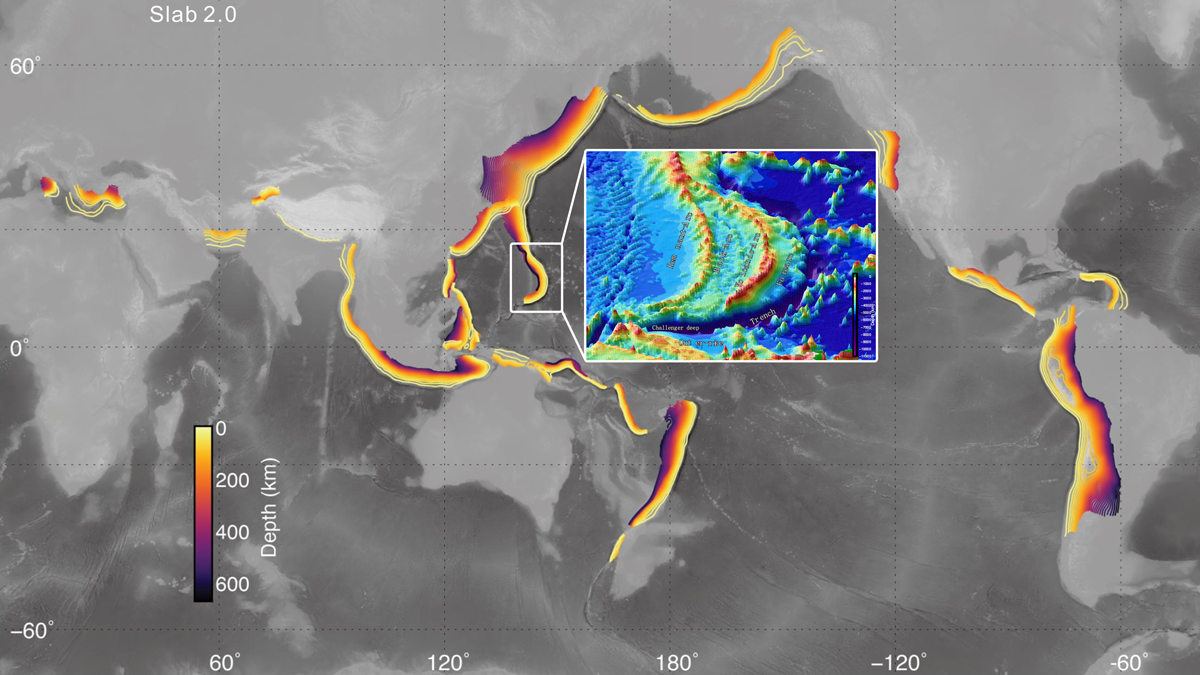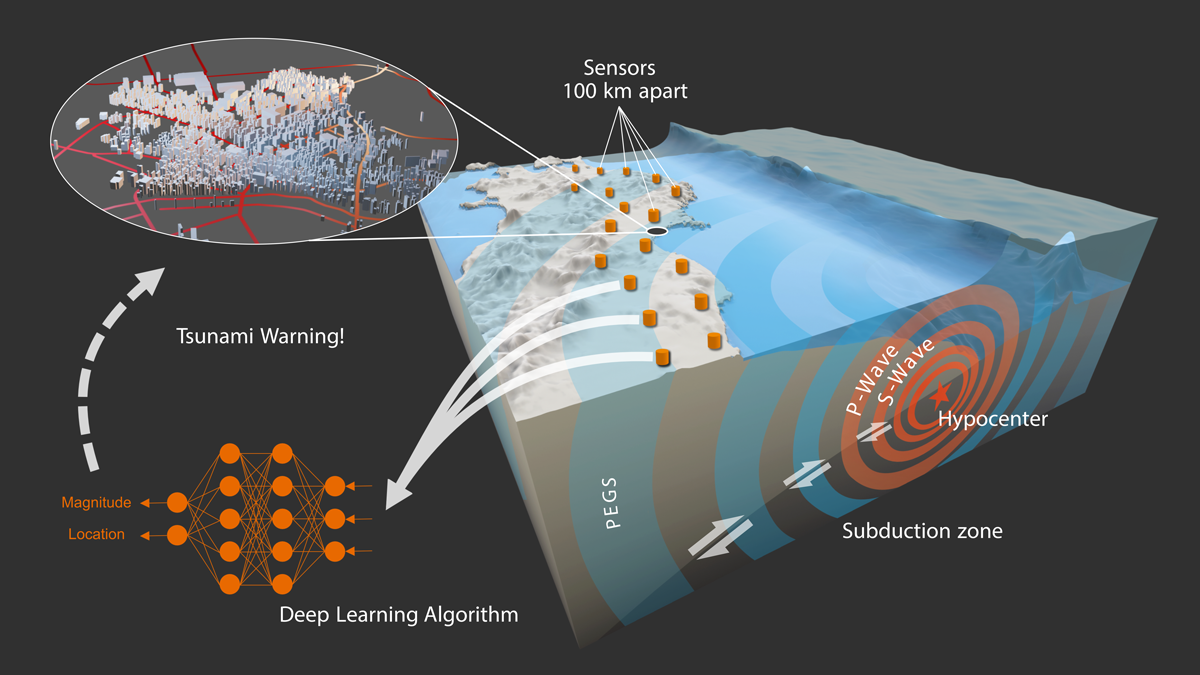Global broadband seismographic networks have provided the science community with 30 years of data which is being used to understand the Earth.
earthquakes
Probing the Sedimentology of a Continental Megathrust
Detailed analysis of sediments covering the Main Frontal Thrust in Nepal show how climate-driven baselevel changes affect sedimentation and should be considered when inferring thrust activity.
Months of Gravity Changes Preceded the Tōhoku Earthquake
Using GRACE satellite data, researchers discovered anomalous gravimetric signals that occurred before a seismic event that started deep within Earth.
Deep Earthquakes Suggest Well-Hydrated Mariana Subduction Zone
Earthquakes as deep as 50 kilometers below the seafloor were detected by 12 ocean bottom seismometers placed around the Challenger Deep.
Aftershocks Reveal Coseismic Rupture of Megathrust Earthquakes
More accurate aftershock zones reveal that the rupture areas of megathrust Aleutian–Alaska earthquakes are larger than we thought and partly overlap, in contradiction with the seismic gap hypothesis.
Western US Adjoint Tomography Reproduces Waveform Complexity
Adjoint tomography employing 3D wavefield simulations for 72 well recorded regional earthquakes in the western U.S. yields spectacular improvements to waveform fits.
Roosters, S’mores, and #EmergencyCute: A Humor-in-Crisis How-To
When natural hazards strike communities, we may not think science agencies should respond with humor. Researchers suggest that sometimes, however, humor can connect communities and bring smiles.
How Land Deformation Occurs When Fault Sections Creep
Using a physical experiment, researchers show how off-fault deformation occurs along strike-slip faults with different types of motion.
Monitoreando terremotos a la velocidad de la luz
Nueva investigación utiliza la gravedad y un modelo de aprendizaje automático para estimar instantáneamente la magnitud y ubicación de grandes terremotos.
Understanding Earthquakes Triggered by Wastewater Injection
A deep dive into a 2015 Oklahoma earthquake reveals new insights into the dynamics of quakes induced by wastewater injection, and could help inform future earthquake hazard modeling.










